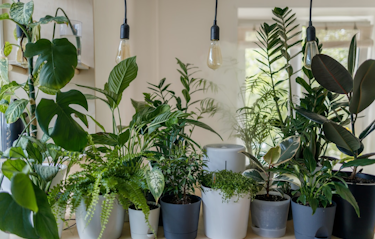
How To Trim Pothos
- Easy Care
- Araceae
- Large
- Evergreen Tropical Vines
We independently select everything we recommend. When you buy through our links, we may earn a commission.
Several reasons cause peace lilies to droop, including overwatering, underwatering, inadequate lighting, and pest infestations. Identifying the cause of the drooping and taking appropriate action revives your plant and prevents further damage.
Published on 22 August, 2023 by Oliver Rouane-Williams
Peace lilies (spathiphyllum) are a popular houseplant known for their attractive foliage and delicate white flowers. However, if your peace lily is drooping, it is a cause for concern.
Peace lilies droop for various reasons, and it's not uncommon for them to do so. Overwatering, underwatering, inadequate lighting, and pest infestations are common reasons for peace lilies to droop. It's essential to identify the cause of the drooping to take appropriate action and prevent further damage.
With the proper care and attention, peace lilies recover from drooping and continue to thrive. Regularly checking your peace lily's soil moisture, light conditions, and pest presence prevents drooping.
Peace lilies prefer slightly moist soil, but too much water leads to root rot, which causes the plant to droop and eventually die.
Signs of root rot include yellow or brown leaves, mushy spots, and a musty smell. The only solution for root rot is to repot the plant, but if the condition is too advanced it likely won’t recover.
Peace lilies can be sensitive to the chemicals in tap water. If adjusting your watering schedule doesn’t help, try switching to distilled water.
Allow the top half-inch of soil to dry out between watering and ensure the pot has good drainage. If the soil is too wet or you suspect root rot, repot the plant in fresh, well-draining soil.
Remember that peace lilies like to be root bound, so choose a smaller pot that won’t hold as much water in the soil.
When repotting, you can separate a healthy clump of roots with attached leaves to propagate your peace lily.
Peace lilies are very quick to droop when they don’t get enough water. Peace lilies prefer moist, but not wet, soil, so only let the top half-inch dry out between waterings. Provide the plant with adequate drainage to prevent water from collecting in the pot.
The good news is that a thirsty and drooping peace lily usually perks right up the same day you give it water. Avoid letting the plant completely dry out.

Peace lilies can live in low light conditions, but they need some filtered, indirect light to thrive. They may droop and become weak if they don't receive enough sunlight.
Move the peace lily to a brighter location, but avoid direct sunlight. If this isn't possible, consider using artificial lights or a grow light.
Peace lilies are susceptible to pests such as spider mites and mealybugs. These bugs feed on the sap and draw nutrients away from the plant, causing the leaves to droop.
Treat the plant with a mild insecticidal soap or a neem oil solution. Follow the instructions on the product label and repeat the treatment as necessary.
Peace lilies are sensitive to temperature fluctuations, and exposure to extreme heat or cold cause them to droop.
Keep the peace lily in a location with consistent temperatures, away from drafts or extreme temperatures. They prefer indoor temperatures between 68-85.
One of the key things to remember when caring for peace lilies is that they are tropical plants that require a high humidity level. In homes with low humidity, the leaves may droop or turn brown.
Mist the plant regularly or use a humidifier to maintain consistent moisture in the air. You can also group your peace lily with other tropical indoor plants to increase respiration, or use a pebble tray filled with water under or near the plant.

If you notice your peace lily plant wilting or its leaves drooping, it may be a sign that the plant is not receiving the proper care. One of the most common reasons for wilting or drooping leaves is excess water, often caused by poor drainage or an inconsistent watering schedule. Waterlogged soil leads to root rot, yellow leaves, and a mushy plant.
Low light or direct sun also causes peace lily leaves to turn yellow or brown. To save a dying peace lily, identify the cause of the problem and take action, such as repotting the plant in a new pot with fresh potting mix and perlite, adjusting the watering schedule, and providing adequate light.
If your peace lily has droopy leaves, but the plant’s leaves are still green, reviving it with proper plant care may be possible. First, check the soil moisture and drainage holes to ensure the plant is not waterlogged or dry. Pruning crispy or brown leaves and removing any affected spathe also helps the plant recover.
Delivered to your inbox every Saturday morning








